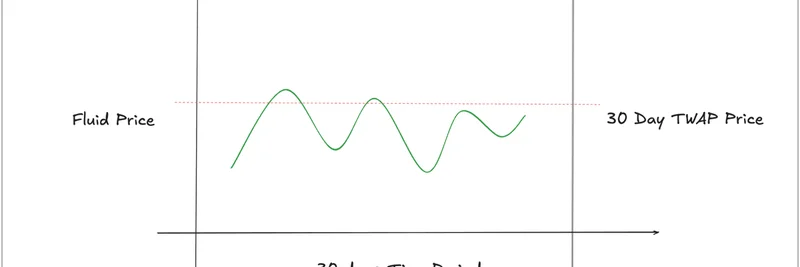In the fast-paced world of DeFi, protocols are constantly evolving to better align incentives and boost token value. Recently, the Fluid protocol, an ever-evolving DeFi platform built by Instadapp, sparked a community discussion on revenue sharing and buybacks for its $FLUID token. This conversation was highlighted in a tweet thread by @0xnoveleader, a researcher and developer, who broke down the key proposals from Fluid's governance forum.
The thread quotes an announcement from Fluid's official account about their growth strategy, which introduces a new revenue allocation model, updated tokenomics, and an economic framework for the protocol's next phase. You can check out the original forum post here.
@0xnoveleader dives into three proposed approaches for handling buybacks, without delving into pros and cons, but providing a clear explanation of each. Let's break them down one by one, with simple explanations for any technical terms.
Approach 1: Dynamic FDV-Based Buybacks
This method ties buybacks directly to the protocol's Fully Diluted Value (FDV), which is essentially the total market value of all tokens if they were all in circulation. The idea is straightforward: if Fluid's FDV dips below $0.5 billion, 100% of the revenue goes straight to buying back $FLUID tokens. If it climbs above that threshold, the buyback percentage follows a mathematical curve defined by x * y = k, where x is the FDV in billions, y is the percentage of revenue for buybacks, and k is a constant (set to 50 in this example).
For instance, at an FDV of $0.75 billion, about 66.67% of revenue would go to buybacks. This creates a dynamic system that ramps up support when the token needs it most.
Approach 2: 30-Day TWAP Buyback
TWAP stands for Time-Weighted Average Price, a way to calculate an asset's average price over a specific period, smoothing out short-term volatility. In this approach, if the 30-day TWAP of $FLUID is lower than the current market price, the protocol allocates 100% of its revenue to buybacks. This helps stabilize the price during downward trends by buying when the token is undervalued relative to its recent average.
The visual below illustrates how the fluid price fluctuates around the 30-day TWAP line, triggering full buybacks when the average is below the current price.
Approach 3: Hybrid Approach
Combining the best of both worlds, the hybrid model adjusts buybacks based on market conditions. In bullish markets (when prices are rising), buybacks are minimized to preserve revenue for other growth initiatives. During bearish periods (falling prices), it switches to the x * y = k curve from Approach 1 to aggressively buy back tokens and provide price support.
This flexible strategy aims to sustain positive price action that reflects the protocol's actual growth, rather than relying on fixed metrics.
In a follow-up tweet, @0xnoveleader shares his personal take: the hybrid approach seems ideal because it offers support precisely when it's needed, slowing buybacks in bull markets to save resources for bears. This way, the protocol can maintain momentum tied to real product development.
Community replies in the thread echo this sentiment, with users like @chilla_ct and @nech_n_ favoring the hybrid method for its adaptability.
Fluid's proposals come at a crucial time for DeFi tokens, where sustainable tokenomics can make or break long-term success. By focusing on buybacks that respond to market dynamics, Fluid is positioning $FLUID as a resilient asset in the blockchain space.
If you're into DeFi or meme tokens with real utility, keep an eye on Fluid's governance—community input could shape the final decision. For more insights on emerging protocols and token strategies, stick around on Meme Insider.


